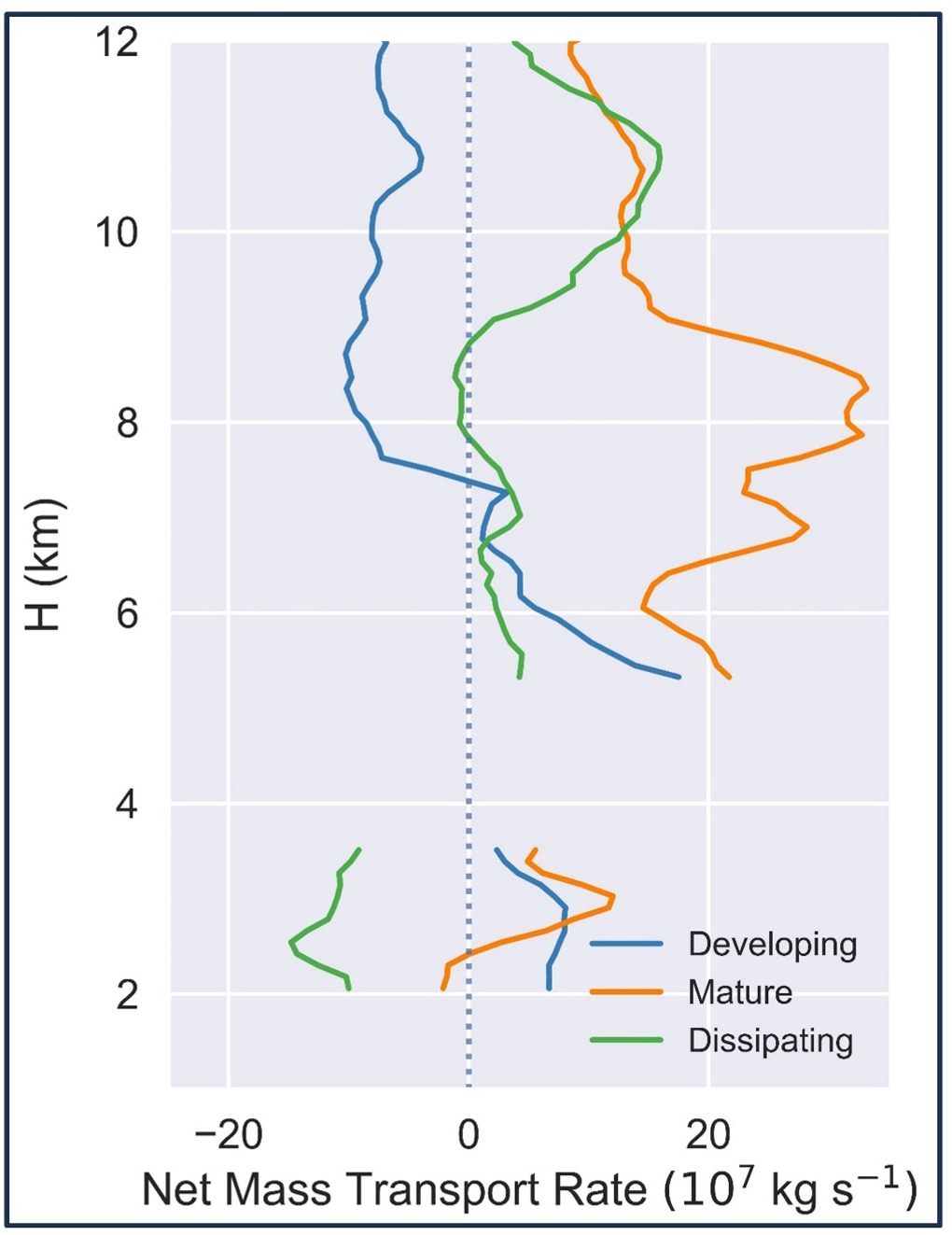Studying isolated deep convective clouds over the Amazon rainforest
Submitter
Gupta, Siddhant — Argonne National Laboratory
Wang, Die — Brookhaven National Laboratory
Area of research
Cloud Processes
Journal Reference
Science
Deep convective clouds play a crucial role in precipitation, atmospheric circulation, and Earth’s energy budget. It is challenging to quantify the vertical motion of air within tall storm clouds formed by convection. These storm clouds are called deep convective clouds (DCCs). Vertical air motion affects critical cloud properties like size and intensity of storm clouds. The researchers studied air vertical mass fluxes for different convective life cycle stages. They tracked isolated deep convective clouds observed near the U.S. Department of Energy (DOE) ARM Mobile Facility installed near Manacapuru, Brazil during the GoAmazon2014/15 field campaign. They showed that updraft behaviors and vertical mass fluxes vary significantly with different convective stages and seasons. This study created a rare long-term data set of observations of updraft behaviors and vertical mass transport within isolated deep convection.
Impact
This study provides key insights into DCC properties in cloud updrafts. It also provides rare, long-term observations to help study DCCs and aerosol interactions with DCCs. The study lays the groundwork for two important impacts: (1) help identify deficiencies in DCC representations in climate models, and (2) constrain the effects of deep convective clouds on Earth’s energy budget.
Summary
Deep convective clouds play a crucial role in precipitation, atmospheric circulation, and Earth’s energy budget. Quantifying the vertical motion of air within these clouds is very challenging. This study examined isolated deep convection over the Amazon rainforest with observations from the DOE ARM GoAmazon2014/15 field campaign. The researchers employed a cloud-tracking algorithm to determine cloud lifetime. The tracked clouds were further examined using a vertically pointing radar wind profiler. This created a rare long-term data set of observations of updraft behaviors and vertical mass transport within isolated deep convection. Seasonal variations in the evolution of updrafts and vertical mass transport were associated with the seasonality of cloud and precipitation properties over the Amazon rainforest. Mature DCCs exhibit stronger updrafts and higher mass transport rates above the melting layer compared to developing DCCs. The DCCs are larger and more intense during the dry season compared to the wet season. The dry season DCCs were associated with stronger updrafts and higher mass transport rates at earlier life cycle stages compared to the wet season DCCs. These results lay the groundwork for two important impacts: (1) identifying deficiencies in DCC representations in climate models, and (2) constraining the effects of deep convective clouds on Earth’s energy budget. Future work will explore aerosol-cloud interactions in isolated deep convective clouds.


